On a cloudy morning in October, a team of scientists set off into Brazil's Atlantic Forest, looking for monkeys. One man carried what looked like an old TV antenna and a machete. A woman beside him held a small metal cage — a trap — and two bags full of bananas.
Their mission: stop the next outbreak of yellow fever in monkeys before it spreads to humans.
Brazil may be trying to cope with the second-highest rate of Covid-19 deaths in the world, after the United States. But the scientists fear this other, far more lethal disease is in danger of erupting in the South American country once again. Yellow fever infects some 200,000 people and kills 30,000 of them each year, more than terrorist attacks and plane crashes combined.
Caused by a virus spread between humans and primates via mosquitoes, its symptoms include severe fever, headaches, and in some patients, jaundice — the yellowing of the skin that gives the disease its name. Severe cases can lead to internal bleeding and liver failure.
Approximately 15% of people afflicted by yellow fever will die from it if unvaccinated, a death rate far higher than Covid-19.
- This story is the part of Stopping the Next One – our multimedia series looking at which diseases are most likely to cause the next global pandemic, and at the scientists racing to keep that from happening. Find out more about the series, and read the other stories, here.
In recent years, Brazil has seen more yellow fever cases than any other country. In December 2016, an outbreak began in Minas Gerais and spread to neighbouring Espírito Santo, both in the middle of the Atlantic Forest. At the time, some 40 million Brazilians at risk of yellow fever lacked vaccinations. By May 2017 it had spread across Brazil, with hotspots in the neighbouring states of Rio de Janeiro and Minas Gerais, but with additional outbreaks as far as the northern state of Pará, nearly 3,000 miles (4,800km) away.
It was the worst outbreak in more than 80 years. More than 3,000 people were infected. Nearly 400 died in a matter of months.
"When you have primates that are trapped in small forests in a high density… it's easy for everybody to get infected," says Carlos Ramon Ruiz-Miranda, a conservation biologist from the State University of Northern Rio de Janeiro. In the mosquito-infested forests of Brazil, the disease seems to jump particularly quickly between golden lion tamarin monkeys and humans. But while mosquitoes are the carriers, it is people who are making the situation worse. As humans encroach further and further onto the forest, they reduce biological diversity and come into closer proximity with other primates.
This trend isn't stopping any time soon — which means the next outbreak may be even more deadly.
The vaccine challenge
Just 80km (50 miles) away from the patch of forest where scientists are hunting for monkeys lies the city of Rio de Janeiro, the sixth largest metropolitan area in the Americas. Six hours north by car along Brazil's Atlantic coast lies São Paulo, the largest metropolis in the western hemisphere.
The proximity of these dense urban areas to the forests create the perfect conditions for an epidemic on a scale unheard of since the yellow fever vaccine was discovered, nearly a century ago.
That's even though yellow fever has a vaccine — a "very effective" one, says Ruiz-Miranda's colleague at the University in Rio, a 33-year-old primate and genetics researcher named Mirela D'Arc.
Mistrust has hampered the recent push to vaccinate 23 million people who live in and around São Paulo and Rio.
In 2018, Brazil's Health Minister announced a campaign to vaccinate nearly 80 million of Brazil's 210 million people against yellow fever. In some municipalities, as many as 95% of residents have been vaccinated. But in Brazil's biggest cities the rate barely tops 50%.
Many Brazilians don't trust their government's directives when it comes to public health. Corruption in Brazil is rampant and even though the vaccine is administered for free, many Brazilians assume they're being told to get vaccinated so that someone else can profit from it. This mistrust has hampered the recent push to vaccinate 23 million people who live in and around São Paulo and Rio. After the 2016-17 outbreak, long lines for the vaccine and fake news spread on messaging apps that it was ineffective dissuaded some from getting vaccinated.
What's more, there may not be enough vaccines to go around. The World Health Organization has called on pharmaceutical manufacturers to increase production, but the vaccine "remains constrained due to limited production capacity," reports Unicef. As a result, barely half of the people living in Rio have been vaccinated against yellow fever.
There could be another way. The world has 7.8 billion people — but only about 2,500 golden lion tamarins.
So, stopping future outbreaks among humans could use a novel approach: vaccinating our hairy, banana-loving brethren.
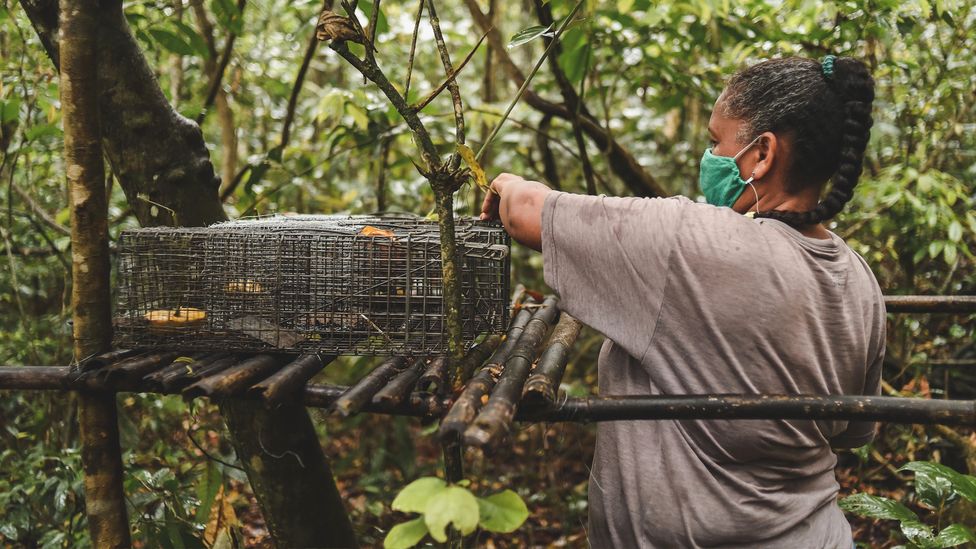
"One way to stop the spread of the disease is to vaccinate humans and the golden lion tamarins" alike, says D'Arc.
"If you vaccinate the monkeys, you have less individuals that are carrying the disease," says Ruiz-Miranda. "It's herd immunity."
Monkey business
At first sight, the golden lion tamarin appears out of place: a fiery ball of orange fluff backdropped by a forest flush with shades of green. Give them a moustache and take away their tail, and they look strikingly like the Lorax in the 1971 children's book by Dr. Seuss, in which a fuzzy creature defends his forest against humans who come to chop down all the trees. In the book, the Lorax is lifted away — taken from his natural environment, forced to leave the forest.
The same happened to the golden lion tamarin of Brazil.
The tamarins once spanned sizeable swaths of Brazil's south-eastern Atlantic Forest. But by the 1970s, logging had chopped their habitat into tiny bits. In 1971, there were fewer than 400 left in the wild, making them a critically endangered species. To save them from extinction, humans took a page from Dr. Seuss's book: conservationists lifted dozens of monkeys from their ever-decreasing habitat and plopped them into nature reserves outside the city of Rio.
By the time it ended, the 2017 yellow fever outbreak had killed more than 4,000 monkeys.
The intervention worked. By 2014, the tamarin population had rebounded to some 1,700-2,400 monkeys, according to Ruiz-Miranda. Most live in fragments of remaining forest in the São João River Basin. Their resilience was enough to reclassify the species from "critically endangered" to "endangered". It looked like the tamarins might persevere.
Until the 2017 yellow fever epidemic hit.
"It is very rare for people to find a dead monkey on the side of the road — that never happens," says Ruiz-Miranda. Which is why he was so shocked at what happened in early 2017. One farmer led him and his team to a dead tamarin in the forest. The monkey tested positive for yellow fever. Soon they found five more monkeys dead. By the time it ended, the 2017 yellow fever outbreak had killed more than 4,000 monkeys. Among some groups of howler monkeys, the fatality rate was as high as 80-90%.
The already vulnerable tamarins were badly affected, too. "Overall we lost 30% of the population, from 3,700 monkeys to 2,600 monkeys — in a period of less than a year," says Ruiz-Miranda.
In the aftermath, Ruiz-Miranda's team started doing routine sampling in the areas where tamarins had died. Wherever they sampled, he says, at least one or two monkeys tested positive for yellow fever.
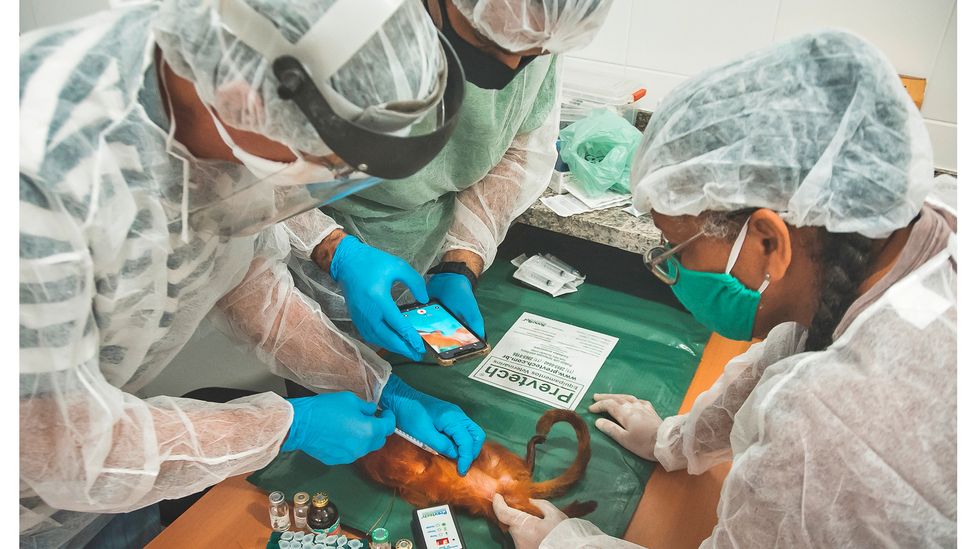
The 2017 epidemic showed that not only humans, but tamarins too, could be vulnerable to a common disease.
"Wildlife is as much a victim of the disease as the human population," says Ruiz-Miranda.
Brazil is home to more primate species than any country on Earth. To save the humans, we may now have to save the tamarins. Which, with traps and bananas in hand, is what D'Arc set out to do one cloudy morning in October.
To catch a monkey
On D'Arc's drive from Rio to the edge of the Poço das Antas Biological Reserve, she kept passing signs of human encroachment into the native forest: a highway, an aquifer system, banana agriculture, cattle pasture.
"You have cattle pastures all the way up to relatively good quality forests," laments Ruiz-Miranda. "And a highway that cuts through the landscape separating the reserve from other forests."
The team entered the forest through a break in a wire fence. It wasn't long before they spotted what they were looking for. Orange-maned and plum-bodied, the adult female tamarin known by her number, F16, sat on a narrow tree branch. When she saw the scientists, she didn't run. She moved toward them, curious, her long red tail drooping down toward the forest floor.
Primates in Africa are much more resistant to yellow fever, because they evolved with the virus. — Júlio César Bicca-Marques
"Generally, the animals are afraid of humans," says D'Arc. "But here in this fragment, the golden lion tamarins are familiar with us."
Led by Andreia Martins, the team from the Golden Lion Tamarin Association, a nonprofit conservation group, set to work. One researcher used a small GPS device to record the monkey's location, tracking the animal's movements throughout the forest. Others placed two banana-laden booby traps on a handmade wooden platform above the forest floor.
The researchers watched as one monkey approached the cage, and then another. The first monkey, wary, jumped to a nearby tree to watch as the second one entered the cage to get the banana. The cage door quickly shut, trapping the tamarin inside. A third monkey — a marmoset, a close relative — entered the second cage without hesitation and… snap!
Monkey see, monkey do.
Once they'd trapped enough tamarins, D'Arc and her team made their way back to a lab where they donned protective smocks, latex gloves and face masks. To ensure the monkeys wouldn't feel anything, the researchers sedated them. Then they did an overall health check, measuring weight and body temperatures and taking fecal, blood and oral samples. D'Arc whisked a cotton swab inside the monkey's mouth, delicately rubbing it around its tiny teeth.
Then came the vaccine. Team members gently shaved some hair from the monkey's lower belly. One dipped the syringe into a bottle of clear liquid, then injected the monkey.
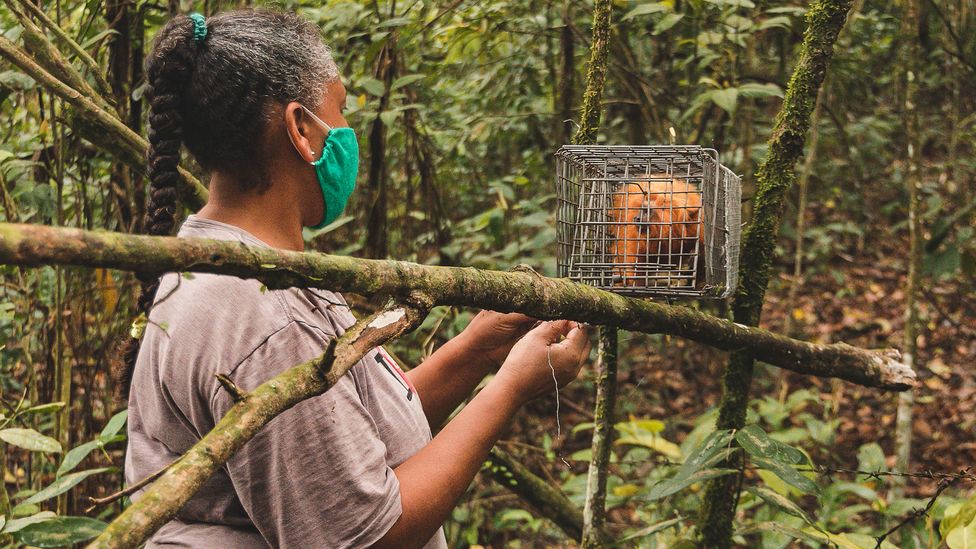
After they had finished vaccinating all the monkeys, the team returned them to their traps and raced them back to the forest before they woke up. As an act of kindness — or perhaps an apology — D'Arc placed an entire bunch of bananas beside them on the wooden platform.
By the end of the day, the team had captured, transported, tested, vaccinated and returned eight tamarins from three different family groups. But their work had only just begun. Over two years, says Ruiz-Miranda, they plan to vaccinate 500 golden lion tamarins.
Then, they'll transfer five groups to Poço das Antas Biological Reserve — one of the spots that lost many of its monkeys in the 2017 epidemic.
The people problem
Like Covid-19, yellow fever might have started with animals. But it was spread across the world by humans.
"Yellow fever is an African-born disease. It wasn't here before the slave trade," says Júlio César Bicca-Marques, an anthropology professor at the Pontifícia Universidade Católica do Rio Grande do Sul and Secretary General of the International Primatological Society, who studies yellow fever among howler monkeys in Brazil. The disease was brought to the Americas some three to four centuries ago, he says.
The Americas were not prepared.
"Primates in Africa are much more resistant to yellow fever, because they evolved with the virus," says Bicca-Marques. Not so for South American monkeys, such as the tamarins and howlers. "Our primates had no history, no evolutionary protection against the virus. So some of them are much more susceptible to the virus and can die very easily."
Once an epidemic starts, primate species have about four to six days in which ... the virus is active and mosquitoes which bite them can get infected. — Carlos Ramon Ruiz-Miranda
Yellow fever spreads when female mosquitoes bite humans or other primates infected with the disease, then bite and infect others. "Once an epidemic starts, primate species have about four to six days in which they are viremic, which means the virus is active and mosquitoes which bite them can get infected," says Ruiz-Miranda. Monkeys thus become "amplifiers" of the mosquito-borne disease.
Today, they are amplifying the risk more than ever before. That's largely thanks to the deforestation of their habitat by humans.
Brazil's Atlantic Forest encompasses some 100,000 sq km (38,600 sq miles) — making it larger than the whole of the island of Ireland.
But the forest was once 12 times that size. The vast majority has been chopped down, mostly in the last five centuries since the Portuguese arrived to colonise Brazil. As the forest is decimated, primates are forced into smaller areas in higher densities. That puts the animals at higher risk for passing infections between them. With human encroachment into those same areas, the risk for those animals passing pathogens onto humans goes up, too.
In decades past, deforestation was driven by the global demand for Amazonian wood and other specialty lumber from Brazil's trees. These days, the main culprit is meat. Some 200 million cows now graze in Brazil's Amazonian regions — nearly one cow for every Brazilian. Eighty percent of the deforestation that occurs in the Amazon today is done to clear the forest and make room for these cows to graze, and "cattle ranching enterprises now occupy nearly 75% of the deforested areas of Amazonia", according to the World Bank.
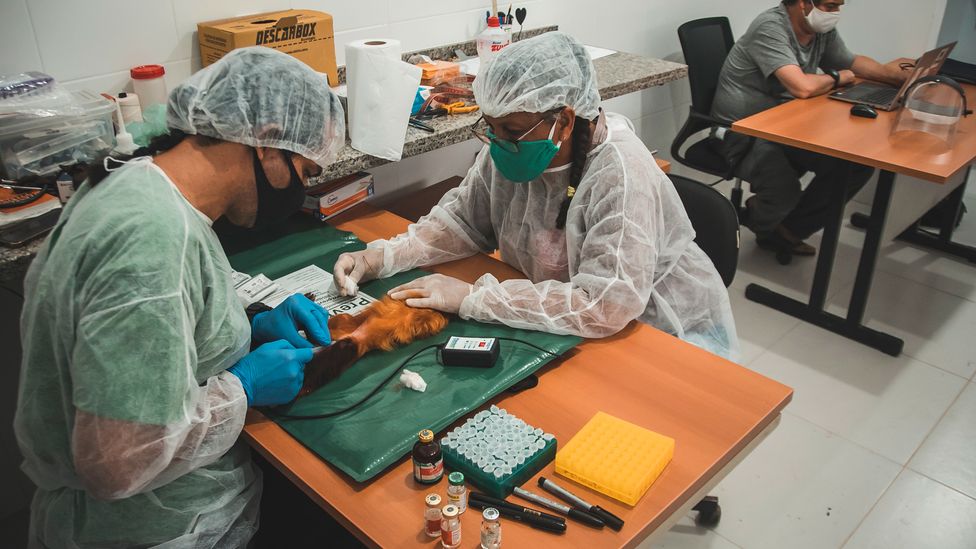
Cattle herders "are taking large areas of the Amazon and burning it", says Bicca-Marques. "They burn everything."
But the blame doesn't only lie with the Brazilians. Most of Brazil's beef is exported to high-income meat-guzzling countries such as the United States. In 2018, Brazil produced one out of every five hamburgers in the world.
The result is a landscape torn into fragments — a few square kilometers here, another few there, with humans living in between. What's more, deforestation has reduced the number of different species living in the forest.
That's dangerous not just for wildlife, but humans. "Biodiversity acts as a buffer" against disease, says Ruiz-Miranda. "If you think of an epidemic as an invasive species, the more degraded the environment, the easier it is for a disease to settle in," he says.
Confined to smaller and smaller fragments in the Atlantic Forest, monkeys are forced to move from one patch to another, putting them at greater risk of infection as they pass within mosquito-range of more and more humans. "Monkeys and humans live together right next to where people have their agricultural areas," says Ruiz-Miranda. "So you have a lot of interactions between the humans and the monkeys."
Researchers say Brazil's 2017 outbreak was a wake-up call, illustrating how quickly humans can spread yellow fever from one part of the country to another.
It's the perfect recipe for an outbreak. Even more worrisome, the edge of the Atlantic Forest kisses the outskirts of Rio de Janeiro, home to more than 12 million people (around six million of whom are vaccinated). All told, more than 148 million people, a third of the population of South America, live within the ecoregion of Brazil's Atlantic Forest, making it 25 times as crowded as the Amazon.
That means that when an outbreak of yellow fever occurs, it can spread fast. Most tamarins migrate only a matter of miles in their lifetimes — but humans can traverse vast distances in a matter of minutes or hours.
Researchers say Brazil's 2017 outbreak was a wake-up call, illustrating how quickly humans can spread yellow fever from one part of the country to another.
As humans continue encroaching upon the Atlantic Forest, the next one may be only a matter of time.
Forest frontlines
If there is one thing that humans can do to prevent the next deadly outbreak of yellow fever, say health professionals, it's to vaccinate as many people as possible against the disease.
But primatologists believe another way is to stop the destruction of Brazil's forests and preserve and foster what biodiversity remains. To do so, however, will be an uphill battle for the farmers and herders who live on the forest's frontlines.
"Ever since I was a kid — since six or seven years old — deforestation was [normal] here," says Mardone Castro Rodrigues, a 32-year-old with a small family farm along the forest's edge. Farmers would clear the forest to plant crops, he says. If the harvest was too little, they'd convert it into a pasture for cows to graze, clear more forest and do it all again. Today, Rodrigues tries to employ agroforestry techniques to farm in a way that doesn't deplete the forest. But with a wife and two kids to feed, he says, there's only so much he can do.
Ana Beatriz Cordero, a 53-year-old who works in ecotourism, says there is cause for hope as urbanisation increases. "People don't want to live in the rural areas, so they abandon them — and the areas regenerate when they head to the city," she says. Cordero moved in the opposite direction, leaving the city of Rio for the forest-side town of Silva Jardim. She grows orchids, plants native seedlings in reforest-depleted patches, and organises educational trips for children and adults from the city.
Today, she says, there are more fauna — including golden lion tamarins — than she saw 15 years ago. She says it's a sign that humans can be stewards of biodiversity, if we're willing to try — a fact that bodes well for the monkeys, too.
"The golden lion tamarins here are loved. They're a beautiful animal," says Cordero.
During the 2017 outbreak, dozens of monkeys across Brazil were stoned, shot or burned by people who feared they were the cause of the deadly disease.
They're also useful. "Júlio [Bicca-Marques] likes to say that monkeys are like the canary in the coal mine," says Karen Strier, anthropology professor at the University of Wisconsin-Madison and a career-long researcher of primates in Brazil. "They're a good warning that you have to worry about yellow fever" — and other diseases, too.
But the tamarins aren't respected by everyone. During the 2017 outbreak, dozens of monkeys across Brazil were stoned, shot or burned by people who feared they were the cause of the deadly disease.
"In past outbreaks in southern Brazil, the reaction from the local government was to kill the monkeys," says Ruiz-Miranda. "At some point, the Ministry of Health was calling yellow fever the 'monkey disease'."
"But the monkeys are our sentinels — they show you when yellow fever has arrived." As the epidemic continued, Ruiz-Miranda says that he and his colleagues pleaded with those living near the forest: "Don't go out and kill the monkeys!"
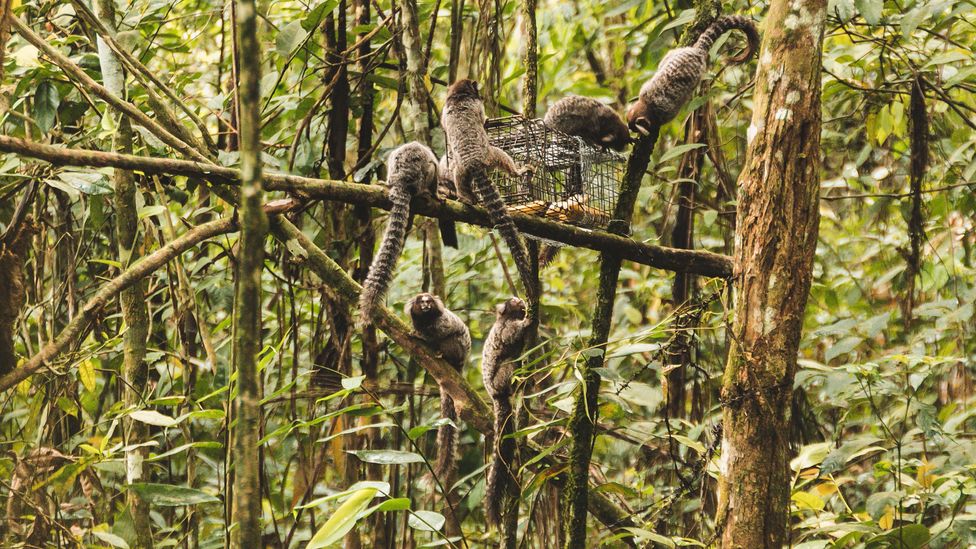
"Some people find them beautiful and admirable. Others are afraid of them because of the disease," says Rodrigues, the farmer. "But people's minds are changing. They are becoming conscious that monkeys are a victim of diseases like yellow fever, just like people are."
Unless more monkeys and more people are vaccinated, health officials warn yellow fever outbreaks will get worse. By one estimate, Brazil will need 226 million doses of a human vaccine by 2026.
Unlike with Covid-19, we're ahead of the curve when it comes to yellow fever, due to a widely-available and effective vaccine. With the right funding and buy-in, scientists say, we can stop the next yellow fever outbreak in Brazil — before it begins.
--
Reporting for this story, part of our series Stopping the Next One, was supported with funding from the Pulitzer Center.



